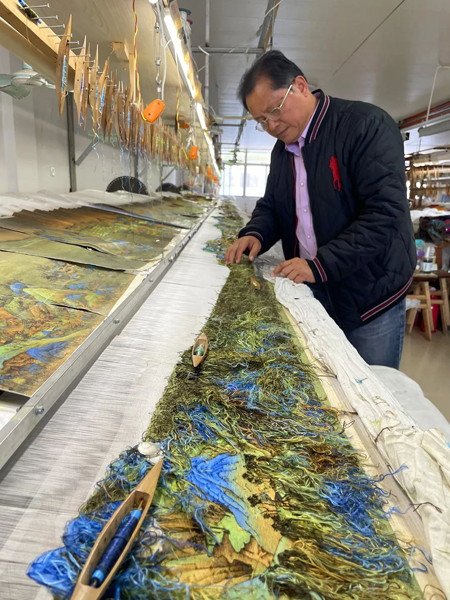
Wu Wenkang works on a piece of kesi crafts in Suzhou New District. [Photo/WeChat account: snd-szgxqfb]
Kesi, which is also called Chinese silk tapestry, recently garnered great exposure and popularity as it has been spotlighted in several hit historical costume dramas like The Mother of the House.
Kesi is a type of hand-woven textile that employs a weaving technique known as tongjing duanwei, which literally means "continuous warp and broken weft" as vertical (warp) threads fully extend, but horizontal (weft) threads do not.
Chinese kesi crafts became widely popular in the Song and Yuan dynasties (960-1368), with Suzhou being the center of Chinese kesi crafts since the Song Dynasty.
In 2006, Suzhou kesi weaving technology was included in the first batch of national intangible cultural heritage items. It was added to UNESCO's list of Intangible Cultural Heritage in 2009.
Suzhou New District is an important home for kesi artists. Currently, there are two representative inheritors of municipal-level intangible cultural heritage, including Wu Wenkang, and one representative inheritor of district-level intangible cultural heritage.
Wu has creatively developed more than 140 new weaving methods and applied for more than 10 patents.
He has not only improved the method of sketching drafts on warps but also introduced industrial gears into the traditional weaving process, which has saved labor and time without sacrificing quality.
Wu has been named as a researcher-level senior arts and crafts artist, a celebrity in arts and crafts of Jiangsu province, as well as a master of Chinese tapestry crafts.
The embroidery factory he founded was designated a Jiangsu Kesi Inheritance Base by the Jiangsu Folk Artists Association in 2007.